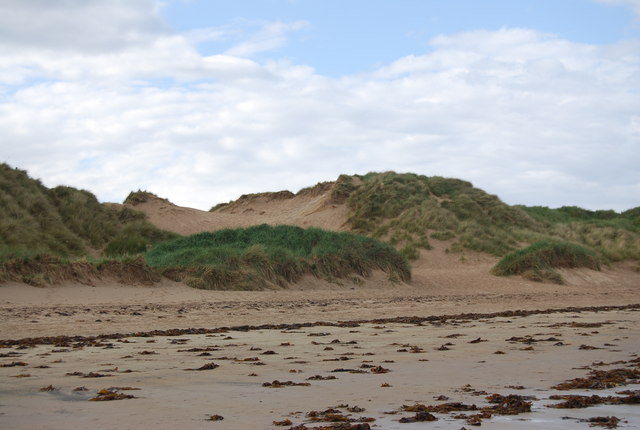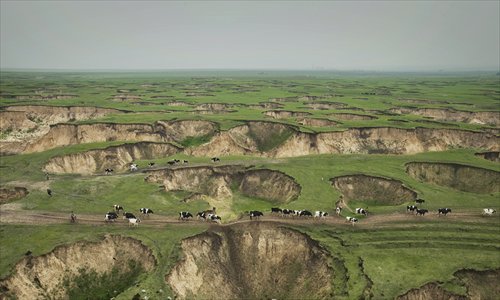I.
Grassland is an important ecosystem
Grassland is one of the most
important resources in China. It covers 4 million km2 crossing from
the northeast to southwest— almost three times the amount of cultivated land and is 40% area
of China. It is significant in Chinese terrestrial ecosystem because it is
the center of biodiversity and cultural diversity, which supports the
sustainable social and economic development, especially the stock breeding of
nomad (People's Republic of China 2004).
II.
Introduction to Hulunbuir
The Hulunbuir grassland is known as one of the most
important three grasslands in the world. It is in the northeast of Inner
Mongolia with a regional scale around 100,000 km2.
The Hulunbuir grassland mainly consists
of 80% natural pasture area, including nearly 120 different kinds of nutritious
vegetations, hence commonly called the "Kingdom of grass”. It was also known as the green
paradise with high quality, free-polluted pasture and is the most preserved
grassland in China (Zhu, 27-31). However, because of negative climate changes and excessive inappropriate
human use of the land, Hulunbuir grassland has suffered varying degrees of
destructions for the past 50 years.
III.
Land Degradation
Among all of the
destruction, the most significant one is the increasingly severe land
degradation or land desertification. The Hulunbuir grassland ecosystem is now,
changing from the meadow steppe and typical steppe into desert steppe and
desert ecosystem. Namely, one third of
the grassland has been degraded or even become sandy land. For instance, in the 1950s, the percent of
desertified grassland was about 0.18% while it grew to 10 times that in 2000
(Squires et al. 91). And between 1980 and 1990, the
desertified grassland had increased by 230,000 Mha. According to a recent
report, the grassland area in 2009 has decreased by 11.92% compared to the
area in the 1980s (Zhu, 27-31). The graph of the ratio of desertified grassland is
shown below:
In addition, the area of cultivated
land has also increased over the years. According to statistics, due to the
expansion of state-owned farms and increasing immigration in 1970s, the
farmland area was about 929.48 million mu (619,653.33 km2). And as a
result of developing economics system zone in Hulunbuir city between 1980s and
1990s, the cultivated area was approaching 1800 million mu (1,200,000 km2)
(Zhang). Here is the graph showing the increase of cultivated land over 50 years.
As land
desertification accelerated, cultivated land expansion and depletive utilization of
grassland resources have dramatically driven up the percentage of
soil erosion. Thus, some vicious results are stimulated. For example, the
kinds of vegetation decreased from 130 to 30 and some herbage even
disappeared from the land (Squires, Lu, Lu, Wang and Yang, 91). Surviving
forage species and their quality have decreased in the past 20 years. The
following is the richness index among different levels of land degradation.
IV.
The Change of Land Use
With the degradation land doubling and the amount of cultivated land dramatically increasing since the 1980s, the
biodiversity of the land shrank and the use of the Hulunbuir grassland gradually
changed. Namely, the converted farmland increased stock breeding development.
According to statistics, livestock grew from 2.71 million to 4.8 million from
1989 to 1999 (Squires et al. 96). The increasing number of
livestock over the past 50 years is shown below:
Today, several policies have been
established to protect the Hulunbuir grassland and strengthen the management of
grassland resource use. For instance, “the Grassland Law of PRC” and “the
Grassland Management Regulations of Inner Mongolia Autonomous Regions” have been passed in hopes of improving the ecosystem and rationally using grassland resources. (Squires et al. 98).
Works Cited
Squires, Victor R., Xinshi Lu, Qi Lu, Tao Wang, and Youlin Yang. Rangeland Degradation and Recovery in
China’s Pastoral Lands. 1 st ed. London: MGP Books Group, 2009. eBook. <
http://books.google.com/books?id=2fu6jVgfh-UC&pg=PA95&lpg=PA95&dq=hulunbeier%20grassland%20ecosystem&source=bl&ots=k9cAoqE4rA&sig=4jjI6ZmIHwilwixgqZhuLynOId8&hl=en&sa=X&ei=-2O1UNS9I4qUiQKzqIHYDw&ved=0CEAQ6AEwBDgK#v=onepage&q=hulunbeier%20grassland%20ecosystem&f=false>.
Zhang, Deping. “Will The Hulunbuir Disappear?—The Thinking On Cultivated
Land Conservation of grassland.” Land and
Resources of Hulunbuir.
Zhu, Libo. “呼伦贝尔草原保护的对策思考”CAOYE YU XUMU. 2007 27: 27-31.
Web. 2 Dec. 2012. http://wenku.baidu.com/view/aa12947ca26925c52cc5bfaa.html>.















